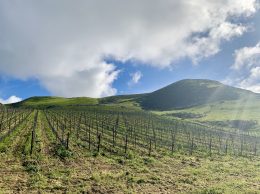Editorial: Taking time out to avoid a Paso Robles water crisis
After an epic 11-hour meeting, the San Luis Obispo County Board of Supervisors made the right decision when it voted 4-0 to impose a moratorium on new pumping in the Paso Robles groundwater basin.
The emergency restriction could last up to two years and only allows new pumping if it is offset by a 1-to-1 ratio. It’s designed to give county officials, vineyard owners and homeowners time to address the looming groundwater crisis in one of the epicenters of economic growth in the region. In recent years, homeowners and businesses have come into increasing conflict as water levels have dropped drastically.
There’s no denying that this move will hurt some individual businesses and have a stifling effect on economic growth in North San Luis Obispo County in the short term. But taking a time-out to find an orderly, permanent and equitable solution is far, far better than the alternative of years of costly litigation and what’s known as an adjudicated settlement.
In California, the state does not oversee groundwater. The users over the water have rights to it, and if disputes arise among them, there are two options: form a water management district to hash things out, or wait for lawsuits to roll in and let the courts adjudicate a settlement. Paso Robles need look no further than the Santa Maria Valley to see the drawbacks of adjudication. It took years of costly litigation for Santa Maria to work out an agreement, and the few farmers and landowners who fought to keep drawing more than their fair share ended up losing anyway.
In our view, there are two main reasons why taking a break to create a groundwater management district is a good idea.
• The lack of data. The San Luis Obispo Tribune did admirable work in a series of stories that laid out the problem clearly, but one thing that the work revealed is that there is a paucity of good data on how much water is being drawn, who is drawing it and how the balance between agriculture and urban uses has changed over time.
• Business needs certainty. An orderly process that leads to a clear and predictable price for water allows vineyards and potential investors to put solid numbers into their business plans.
The dispute over groundwater in Paso Robles is mostly a dispute over how much water will cost. Luckily, wine grapes resist price commoditization quite well. If water costs more, Paso Robles wines can target premium price brackets in order to make up the difference in a way that growers of other crops cannot.
In the meantime, it is well worth burning a few land speculators and throttling growth for a year or two to ensure the long-term viability of Paso Robles as a continued engine of economic success.











